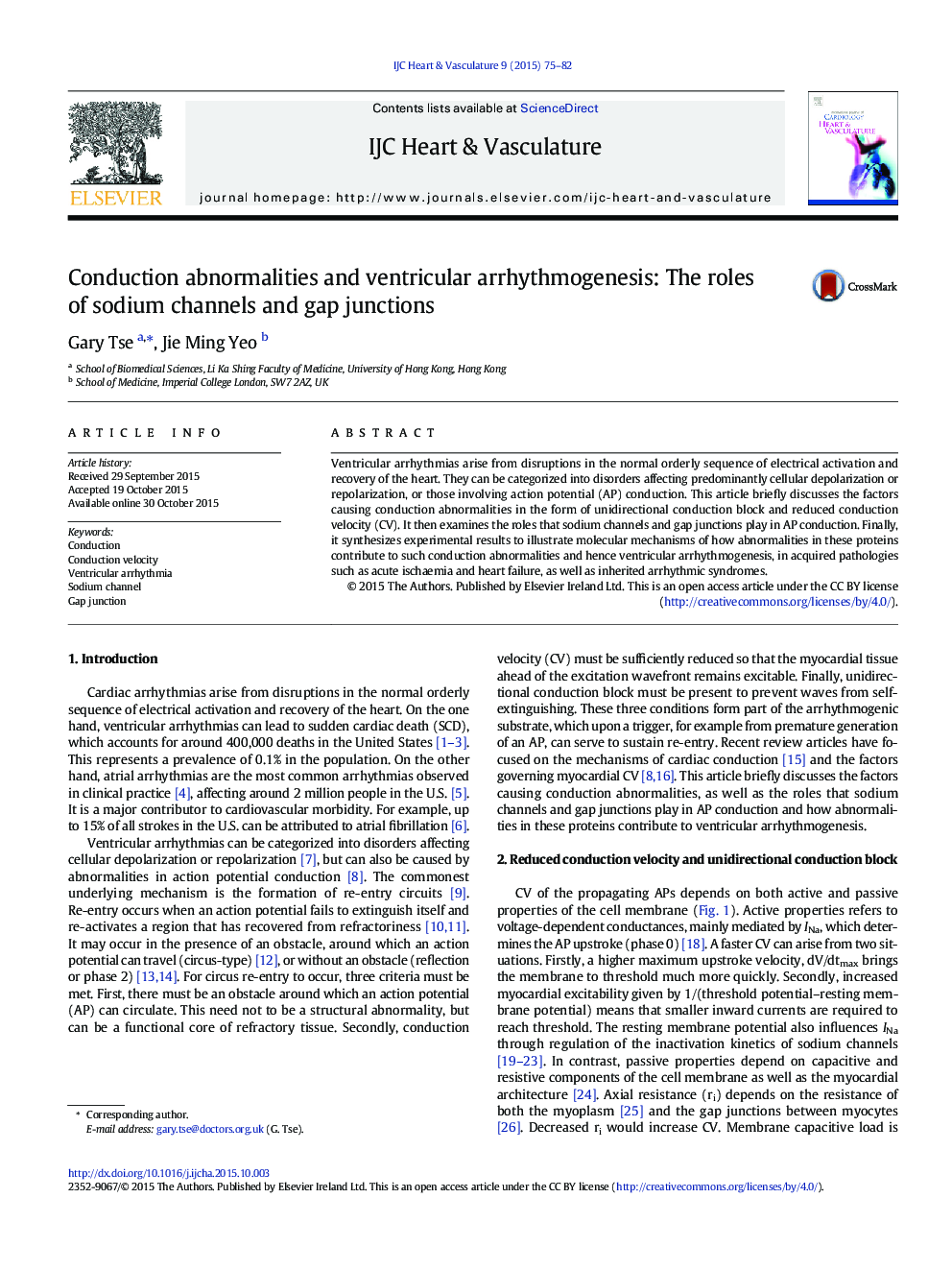| Article ID | Journal | Published Year | Pages | File Type |
|---|---|---|---|---|
| 2926971 | IJC Heart & Vasculature | 2015 | 8 Pages |
Ventricular arrhythmias arise from disruptions in the normal orderly sequence of electrical activation and recovery of the heart. They can be categorized into disorders affecting predominantly cellular depolarization or repolarization, or those involving action potential (AP) conduction. This article briefly discusses the factors causing conduction abnormalities in the form of unidirectional conduction block and reduced conduction velocity (CV). It then examines the roles that sodium channels and gap junctions play in AP conduction. Finally, it synthesizes experimental results to illustrate molecular mechanisms of how abnormalities in these proteins contribute to such conduction abnormalities and hence ventricular arrhythmogenesis, in acquired pathologies such as acute ischaemia and heart failure, as well as inherited arrhythmic syndromes.
